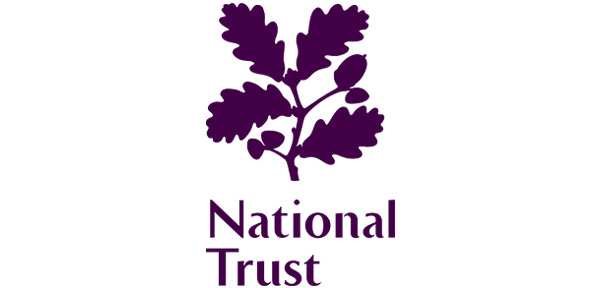Stemming the decline in Britain’s biodiversity
One of the largest landowners in the UK, the National Trust is now playing a vital role in helping to stem the decline in Britain’s biodiversity. It is using Esri’s ArcGIS platform to identify threatened habitats on its land, implement conservation schemes and monitor the success of wide-ranging initiatives to create thriving natural environments.
High-nature habitats around the country in National Trust care are protected, improved and enlarged
Bog mosses, which make peat, are beginning to recover in degraded bogs in the Peak District
Coastal habitats will be restored so that they are better able to accommodate rising sea-levels
The Challenge
A staggering 60% of species in the UK have decreased in number over the last 50 years, and many native plants, birds and animals are at serious risk of becoming endangered. With an estate of over 250,000 hectares in England, Wales and Northern Ireland, the National Trust wanted to play a greater role in protecting and nurturing biodiversity in the UK.
As part of a new strategy, called ‘Playing Our Part’, the organisation set out to implement new approaches to land management to help restore wildlife. However, it didn’t have a comprehensive database of the many habitat types in its historic properties, monuments, countryside and coastal areas, in one centralised location. “We were engaged in managing a number of particularly important wildlife sites, with a high nature value, but didn’t have a complete picture of the biodiversity across all our land and water, all around the country,” explains Huw Davies, Head of Conservation Information at the National Trust.
For the first time in its 120-year history, the National Trust now has a single, centralised source of information about habitats on its land, which it can use to plan, prioritise, implement and monitor wildlife conservation schemes
Huw Davies – Head of Conservation Information, the National Trust
The Solution
Using Esri’s ArcGIS Server solution, the National Trust pulled together habitats data from surveys undertaken at specific properties, and at regional-level, over the previous 30 years. “For the first time in its 120-year history, the National Trust now has a single, centralised source of information about habitats on its land, which it can use to plan, prioritise, implement and monitor wildlife conservation schemes,” Davies says.
GIS specialists at the National Trust analyse the data in the habitats database, using Esri’s ArcGIS Desktop solution, and identify the best opportunities to make habitats bigger, better and more joined up. The trust can identify opportunities for habitat enhancement and enlargement, working in partnership with other landowners beyond the trust’s boundaries.
Furthermore, National Trust is now beginning to use Esri’s Collector App for ArcGIS to verify, expand and enhance its centralised habitats database. Rangers working on the land can collect habitat and biodiversity data in the field on smartphones, to monitor the evolving condition of land, water quality and habitats. All data collected in the field is synchronised with ArcGIS Server, giving the National Trust what Davies describes as “the view from the ground” and constantly putting better information back into the trust’s central systems.
ArcGIS is a pivotal tool that is helping the National Trust to identify priority habitats and then intervene appropriately to enrich and extend the biodiversity of its land
Huw Davies – Head of Conservation Information, the National Trust
Benefits
Firm evidence for prioritising conservation schemes
The new centralised habitats database gives the National Trust a firm evidence base for identifying, planning and prioritising conservation schemes. “ArcGIS is a pivotal tool that is helping the National Trust to identify priority habitats and then intervene appropriately to enrich and extend the biodiversity of its land,” Davies says. “It helps us understand where the best opportunities for nature are, so we can focus our resources in the right locations and work with partners to achieve the most positive impact on the natural environment.”
Improved implementation and monitoring of projects
ArcGIS also plays a key role during the implementation of habitat restoration programmes and in monitoring the success of the trust’s interventions. For instance, in the large tracts of degraded Blanket Bog and Upland Heathlands in the Peak District, the National Trust is using ArcGIS at the desktop and in the field to locate and block damaging drainage channels and conduct vegetation surveys. This is a particularly significant project because the organisation is responsible for 28% of England’s entire priority habitats in the uplands, and the bog mosses that decompose to make the carbon sink that is peat, are beginning to recover as a direct result.
Greater understanding of long-term threats to biodiversity
By using ArcGIS to perform detailed habitats analysis, the National Trust is gaining a far greater understanding of factors like land-use and climate change that may pose a serious, long-term risk for threatened species. For instance, the National Trust has modelled the impact of higher sea levels on its 775 miles of coastline using ArcGIS. It is now applying the intelligence it has gained to identify high-nature coastal habitats that may become changed, understand the implications for species and assess opportunities for coastal habitats to move inland.
New ways to encourage support and communicate success
In the future, the National Trust plans to make use of Esri’s ArcGIS Online to create engaging Story Maps to help it educate the general public about the threats to biodiversity and the vital importance of its conservation activities. Davies says, “Should we need to set up an appeal to help fund a scheme to protect a particular habitat type or wildlife area, we will be able to use the power of ArcGIS Online and Story Maps to do that. We will also be able to create Story Maps to demonstrate the success of our current initiatives and publicise the great work that the National Trust is doing to improve the fate of the UK’s amazing nature.”



